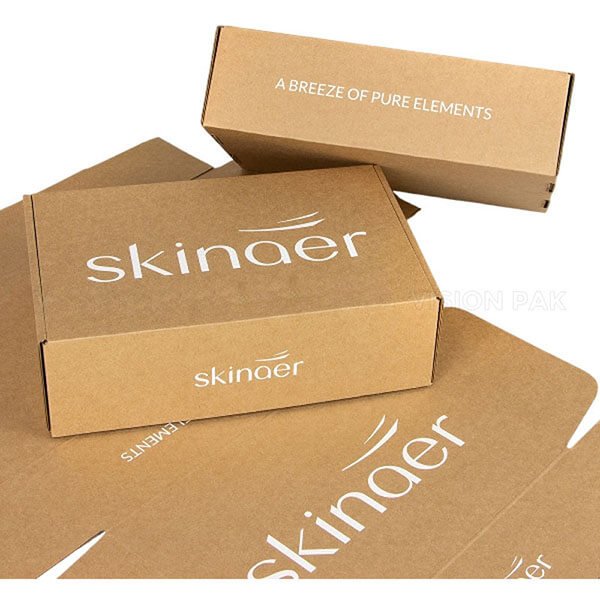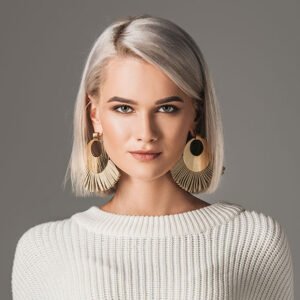
Have you held a box and wondered why it seemed so sturdy and reliable? Why did your pizza come warm, or Why did it protect your new coffee machine during shipping? Behind these commonplace achievements lies a silent hero: the corrugated box. These boxes, which are the foundation of the packaging industry, are much more than just “cardboard”, and they have several elements.
We’ll literally peel back the layers in this guide to explain the different types of corrugated packaging boxes, what they’re made of, how they’re made, and why businesses and even households rely on them every single day
Understanding Corrugated: Beyond Cardboard
People often use paperboard or thick-paper when they say “cardboard” instead of corrugated fiberboard. What does the term “corrugated” mean then? It describes a structure made up of linerboards sandwiched between an inner medium that is fluted (wavy). In addition to providing us with corrugated packaging boxes that offer significant protection in a lightweight frame, this setup greatly strengthens the materials.
It’s interesting that although the term “corrugated cardboard” is frequently used, the correct term is actually “corrugated fiberboard”. These boxes combine stiffness and cushioning to protect contents during handling, stacking, and drops.
Corrugated packaging didn’t just happen by accident, it was invented in the 19th century to provide better protection for fragile goods like ceramics and glasses. Thanks to its fluted layer,corrugated material cushions items by trapping air and absorbing impact, perfect for keeping things safe in storage or while being shipped. Despite being strong, this clever design keeps the box light and stable, even when piled on top of each other.
What Is Corrugated Cardboard Made Of?
Have you ever wondered what materials go into making cardboard? It’s a combination of materials designed to perform:
- Linerboard – the flat sheets that make up the outside facing are often made of kraft and recycled materials.
- Medium – the cushioning and structure support provided by the central wavy layer.
These layers are joined using eco-friendly starch adhesives.
Since the majority of the materials are from responsibly sourced pulp and recovered fibers,corrugated is recyclable and sustainable. In recent years, the corrugated business has maintained a 96% recovery rate.
Types of Core Corrugated Boxes
Different corrugated structures are needed for various jobs. This is a summary:
- Single-Wall – two liners are positioned between a single layer of fluting. It’s ideal for general shipping and multipurpose.
- Double-Wall – perfect for heavier or more delicate items, this design features three liners and two flutes.
- Triple-Wall – constructed with four liners and three flutes, utilized for export, industrial,or large-scale shipping.
- Corrugated Trays – boxes with an open top that are usually used for exhibitions,produce, or baked goods.
- Die-Cut – customized forms made for particular brands and products.
- Corrugated Mailers – slim, protective packaging perfect for e-commerce products like books or cosmetics.
These partnerships range from heavy-duty logistics to daily deliveries.
Diving into Flute Types and Strength
The flute type frequently determines how well your box performs.
- A-Flute (5mm): thickest and most cushioning
- B-Flute (3.2mm): fine and strong usually used in die-cut packaging
- C-Flute (4mm): a classic balance of protection and efficiency
- E-Flute (1.6mm) and F-Flute: ultra-thin ideal for retail displays or printed packaging
Every decision has an impact on storage effectiveness, print quality, stacking strength, and cushioning capacity.
The Journey from Fiber to Box
- Pulping – recycled corrugated or wood chips are used to make paper pulp.
- Curling (Corrugating) – heated rollers from the fluted medium.
- Laminating – starch adhesive is used to attach liners to both sides of the flute.
- Cutting and Creasing – sheets are trimmed and scored to shape.
- Custom Printing and Assembly – folding into shape and branding are optional.
- Flattening and Shaping – until they are prepared for assembly and filling, boxes are
shipped flat.
This approach blends environmentally friendly production techniques with precision engineering
Real-World Uses Across Industries
Custom corrugated boxes are a great way to meet a variety of purposes.
E-Commerce – die-cut boxes and mailers provide both security and stylish branding.
Food and Beverage – produce trays, pizza boxes, and bottle carriers hold up to moisture and stacking.
Electronics – shock-resistant inserts keep gadgets safe.
Retail Displays – custom shapes and graphics help sell products while delivering.
Industrial Logistics – bulk or pallet-size triple boxes, sometimes called “Gaylord” boxes,
support large, heavy inventory.
The Unique Features of Corrugated Boxes
Corrugated boxes have a number of significant advantages:
Strength-to-weight ratio – exceptional durability without needless bulk.
- Cost-efficiency – reduced expenses for transportation and raw materials along with
fewer product returns.
- Eco-friendly – made with a lot of recyclable materials and renewable resources.
Reusing one ton of fiberboard corrugated boxes saves approximately 390 kWh of energy, 46 gallons of oil, and 700 gallons of water.
- Customizable – easily printed, shaped, coated, and branded to suit any product
requirement or identity.
- Insulating – they are perfect for temperature-sensitive products due to their efficient
thermal and acoustic qualities.
Strength Testing and Certification in Quality Assurance
Corrugated boxes are put through a thorough testing process to guarantee reliability.
- Edge Crush Test (ECT) – measures the strength of edgewise stacking.
- Mullen (Bursting) Test – measures one’s ability to withstand punctures.
- Flat Crush Test – flute strength under pressure is assessed.
- Water Absorption Test (COBB) – checks the moisture resistance particularly crucial for
food packaging.
The results, which include ratings, construction type (single-, double-, or triple-wall), and manufacturer credentials, are frequently displayed on the circular Box Maker’s Certificate (BMC).
Considering Sustainability and Circular Design
One of the most recycled materials in the world is corrugated. Closed-loop technologies allow manufacturing and post-consumer waste to be recycled into new liners and mediums at fiber mills. Each recycled ton contributes to a significant reduction in emissions, water use, and energy consumption.
Businesses can accomplish sustainability objectives like Zero Waste or Circular Economy accreditation by incorporating reuse and recycling programs, such as returnable bulk boxes in warehouses.
Eliminate Misspellings: Identifying the Correct Word
You’ve probably seen odd spelling like corrogated, corrigated, or corregated, however the correct term is corrugated. To prevent confusion and make sure you have exactly what you need, it helps to use the accurate spelling to look for or source packaging products.
Mini Scenarios
Are glass jars and other delicate things being shipped?
Select a double-walled corrugated box and add dividers or corrugated inserts.
Do you want your packaging to appear elegant and well-designed?
Choose branded tape and die-cut custom corrugated boxes with printed designs.
Are you selling at a pop-up store or farmer’s market
Make use of corrugated trays since they are more portable, stackable, and simple to exhibit.
Are you dedicated to sustainability?
Use eco-friendly printing and request sheets of corrugated fiberboard that are created from recycled resources.
Corrugated at a Glance
Corrugated fiberboard is more than simply paper; it’s an eco-friendly product with tailored performance. It is sturdy, adaptable, and effective for anything from securing devices throughout transportation to producing unique packaging experiences. Thinking beyond “just a box” can lead to more intelligent and environmentally friendly packaging options, whether you’re shipping things, displaying items, or keeping goods in storage.
Start customizing your box today with YihongBox and turn every unboxing into a brand experience. Strong, stylish, and sustainable packaging that speaks for you. Make every box unforgettable with custom designs made to impress.


